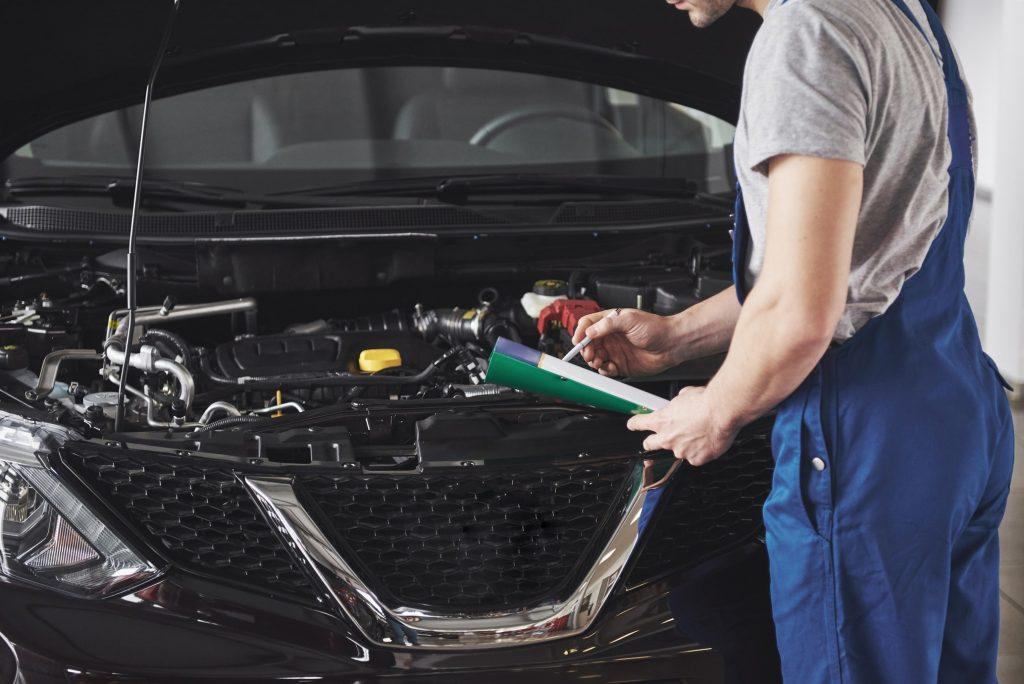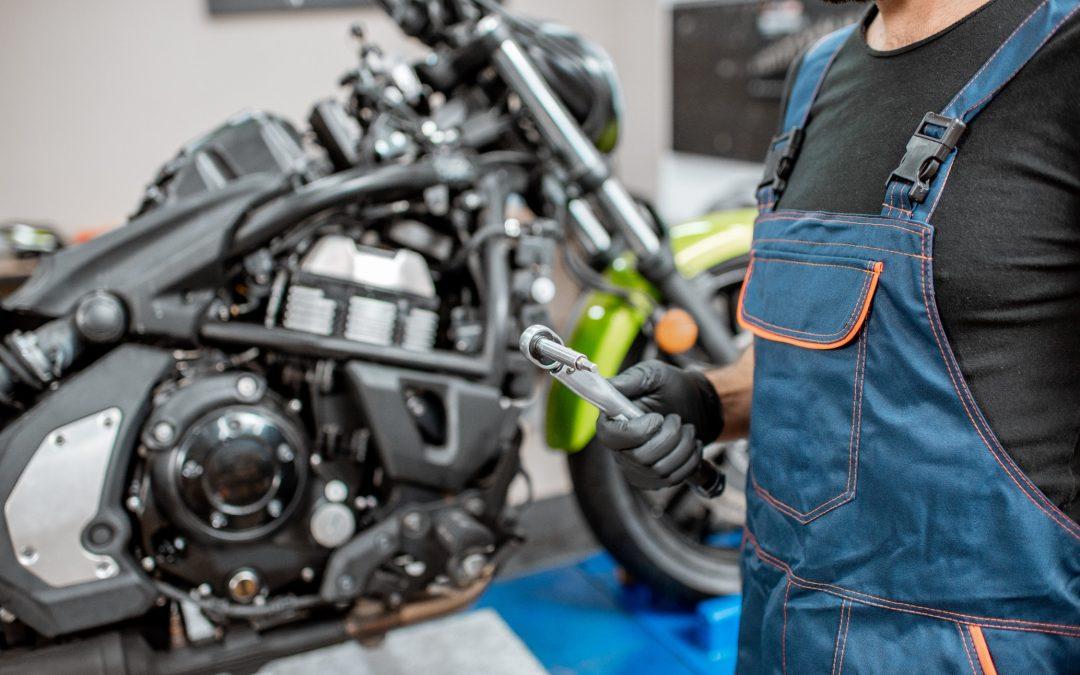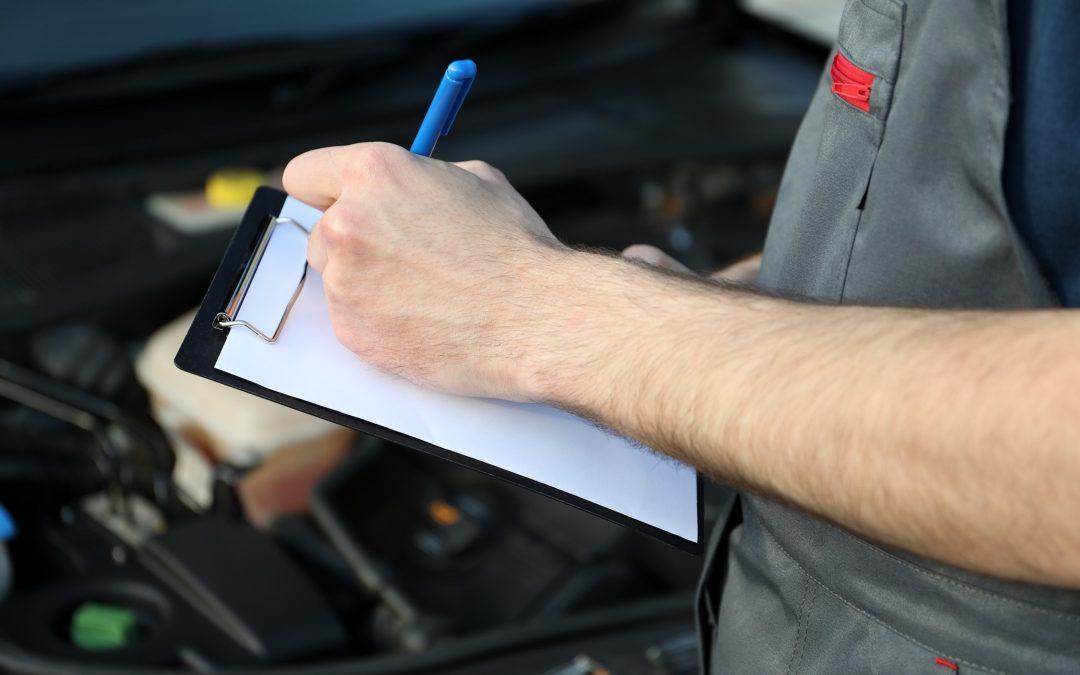Is your Ministry of Transport (MOT) renewal date looming? Or maybe you’ve just bought your first car and are wondering how long an MOT actually takes. Find out the answer to this question as well as many more MOT-related queries below. From what’s involved in an MOT test to how long an MOT certificate is valid for, our team our experienced and highly-knowledgeable mechanics have all your MOT questions covered!
What is an MOT test?
An MOT is a legal requirement that must be carried out by a DVSA-approved examiner within an MOT test centre. It involves the yearly inspection of a vehicle in order to ensure it has passed the DVSA’s specific criteria. This criteria includes an extensive range of car safety checks such as examining the condition and operation of the vehicle’s tyres, seatbelts, steering, suspension and seats.

What is checked during an MOT?
The whole purpose of an MOT test is to ensure that the vehicle meets with at least the minimum legal safety level. As a result, the MOT test covers the checking of a wide range of vehicle components including everything from the brakes to the bodywork and even the windscreen wipers. So you know what to expect from your MOT, we’ve created a full list of vehicle components that are checked during this inspection.
Brakes
When it comes to ensuring your safety on the road, the brakes are one of the most important components in your vehicle. It’s therefore vital that the brake discs, pads, callipers, pipes, master cylinder, servo and cables are all examined and work correctly. The brakes also should be balanced and they should be able to effectively decelerate, while the pedal rubber must be in good condition (no excess wear) and the handbrake must provide enough traction to bring the car to a stable halt.
Bodywork
The bodywork must also be deemed safe, so examiners need to make sure there are no sharp and potentially dangerous edges caused by corrosion or damage. Excessive rust on the bodywork located within 30-centimetres of important components, like the brakes and steering, can also cause a vehicle to fail the MOT.
Doors
All doors must be able to be opened from within and the outside while other openings (including the bonnet and boot) must be suitably secure when shut.
Emissions
If your vehicle runs on fuel (like diesel or petrol), then special equipment will be connected to your vehicle’s exhaust in order to measure the type and amount of emissions being released. The level of acceptable emissions will vary depending on the age of the vehicle with newer vehicles typically being subject to more stringent standards.
Exhaust
The exhaust system will also need to be checked by an examiner as well as the fuel filler cap to determine that the system won’t be susceptible to leaks.
Horn
Quite simply, the horn must work and be audible enough for other drivers to hear. The horn must also play only one note and not be classed as a ‘novelty’ sound.
Lights
Lights including the vehicle’s headlights, tail lights, indicators, side lights, hazard lights, fog lights and brake lights must also be in working order. Headlights are also checked to ensure that they are properly aligned.
Mirrors
Anything that could impair the driver’s vision needs to be checked which includes the vehicle’s mirrors. They should therefore be clear and without cracks or considerable damage.
Seats (including seatbelts)
Seatbelts are legally required in all post-1965 vehicles and should be fixed in place and in good condition. While not a legal requirement, seatbelts are also being highly-recommended for cars built before this time, too. The seat itself should also be securely fixed.
Steering
The examiner will also check the condition and security of the steering wheel and column while the steering bearings, bolts, clamps, gaiters and universal joints should also be checked to ensure they’re operating correctly. If the vehicle has power steering, this should also be tested while the engine is running.
Tow bar
Not all vehicles have tow bars, but if yours does, then the examiner will take a look at the overall condition to make sure it isn’t damaged or corroded.
Vehicle identification
Every car should have a Vehicle Identification Number (VIN) which is also known as the chassis number. This number must be clearly displayed and easy to read. It can be found either on the V5 registration document, at the base of the windscreen or on a panel under the bonnet.
Wheels and tyres
Understandably, the vehicle must have four wheels that are all securely attached with the correct number of bolts. The rims and wheel bearings will also be assessed for any cuts, distortion or cracks, ensuring the overall condition of both the wheels and tyres are passable.
Windows
Chips and cracks in the windscreen can cause MOT failure, so it’s important to ensure that your windscreen is in good condition before taking your car for an MOT. Similarly, the driver’s vision could also be impaired by the windscreen wipers if they’re damaged or are not properly secured. The MOT examiner will therefore assess the condition of both the windows and the wipers.
How long does an MOT test usually take?
Now you know what’s checked during an MOT, you may be wondering exactly how long does an MOT take? Let’s find out. Luckily, an MOT test won’t require your family to be without a car for several days or even a whole day as MOTs can be completed in just 45 minutes, but can last up to an hour.
At ART Garage, our MOTs typically only take 45-60 minutes to complete. While we always advise contacting us directly to book in advance, we do work on a first come, first served basis. Regardless of whether you choose to pre-book your MOT with us or arrive that morning, we’ll do our best to fix issues on the day.
How long does an MOT and service take?
However, if you choose to book your car in for a vehicle service at the same time as your annual MOT, then you should expect a full MOT and service to last anywhere between two to four hours. This is because the average service should take no longer than three hours to complete while the typical MOT lasts only an hour, suggesting that a complete MOT and service can take up to four hours.
A service will check the overall mechanical state of your vehicle. Unlike an MOT that assesses the condition of your vehicle, a service attempts to rectify a range of small issues including topping up the vehicle’s fluid levels (engine oil, power steering fluid, brake fluid, etc.), checking the brake pads and handbrake as well as replacing the oil filter.
How long is an MOT valid for?
Once the MOT has been completed and your vehicle has passed, you’ll be able to carry on driving, but how long does an mot last? Well, you won’t need to worry about booking your vehicle in for another MOT for a year as this is an annual auto inspection. It is usually valid for one year from the exact date of your last MOT. To find out when your MOT is due, you can either look at the date that will be printed on the renewal certificate or view your renewal date online.
If you’d like to keep the same MOT renewal date but get ahead of the game, you can renew your certificate up to a month (minus a day) before it runs out. Renewing the certificate within this period will allow you to retain the same renewal date. Unfortunately, there is no MOT renewal grace period and you cannot tax a vehicle without a valid MOT certificate.
If you fail to renew your MOT in time and continue to drive your vehicle, you could receive hefty penalties with some drivers receiving fines of up to £1000 and points on their licence. While some drivers will receive police cautions, it’s always best to book your MOT in advance before your renewal date.
MOTs at ART Garage
A reliable local MOT garage based in Crewe, Cheshire, we come highly-recommended by our customers thanks to our old fashioned values. Priding ourselves on both our integrity and honesty, you can rest assured that your vehicle will be in safe hands when you choose ART Garage Crewe to carry out your annual MOT or perform a specific repair.
To find out more about booking your MOT test or to discuss an MOT enquiry with a knowledgeable and experienced member of our team, then please don’t hesitate to get in touch. You can either call us on 01270 214445 where we’ll do our best to answer your query or find a suitable time and date that works for you to carry out your vehicle’s MOT.
Alternatively, you can also send you enquiry through to us using our handy online contact form. Simply fill in the form with your basic contact details including your name, email address and telephone number alongside your enquiry. Upon receiving your enquiry, a member of our team will be in touch to discuss your servicing or MOT requirements.
It’s always best to book in advance, so no matter how you choose to get in touch, please do contact us first so we can ensure a quick turnaround.


